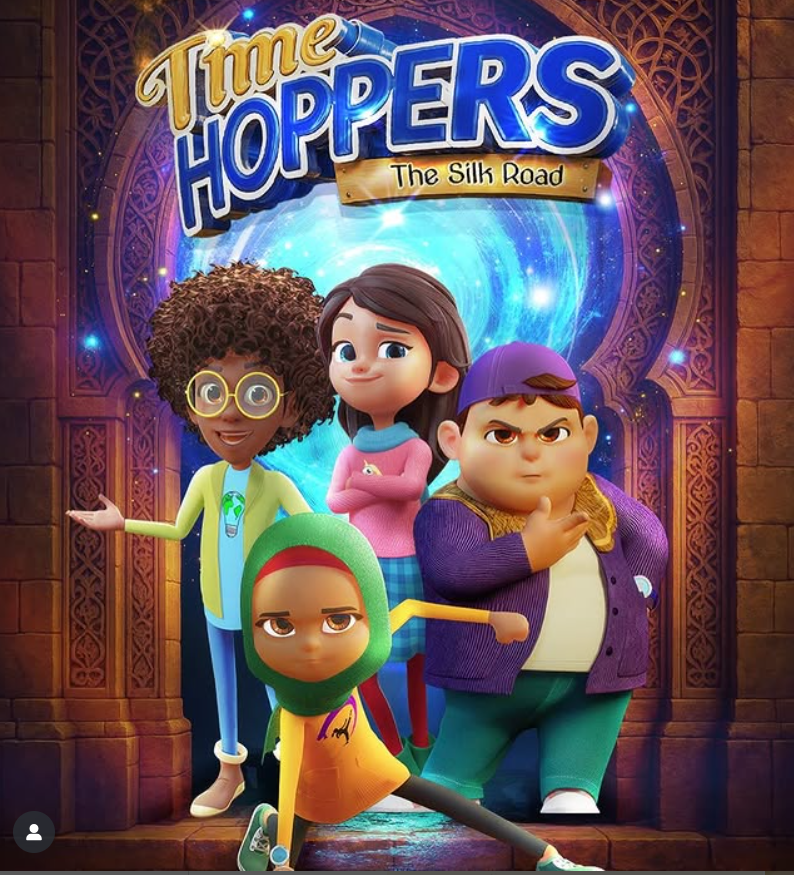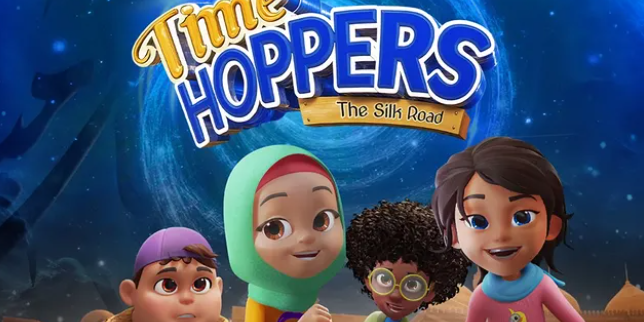How a global creative renaissance is powering Islamic values-inspired animation
Children’s animation centered around Islamic values has passed the tipping point in terms of growth and demand, undergoing a dramatic shift in recent years. The once-esoteric, media outlier has expanded from a niche space into one of the fastest growing segments of the global industry.
The visibility is long overdue, given its under-representation for decades – according to a 2021 study, less than 2% among 8,500 characters from 200 major films spanning the US, UK, Australia, and New Zealand, were Muslim.
A surge in demand has paved the way for new platforms, studios, and creators, boosted by growing interest from Muslim households and streamers, investments from deep Gulf pockets, and new production hubs in Southeast Asia.
Investment reshapes the narrative
Investment from Gulf-based cultural institutions - particularly Saudi Arabia and the UAE - has emerged as a prominent driver. Grants, accelerator programs, and co-production schemes have been rolled out, that have rapidly elevated production quality across the region.
In the UAE, this momentum builds on an existing tradition of animation centered on local values, heritage, and moral storytelling. This foundation has helped the country expand its creative infrastructure to produce content that resonates with Muslim and Arab audiences.
A flagship example is Mansour, the Emirati series that first aired more than a decade ago. In 2024, it returned with a major reboot - The Adventures of Mansour: Age of AI - featuring 52 new episodes.
Blending themes such as artificial intelligence, climate change, and space exploration with lessons on family and friendship, the series embodies the region’s drive toward culturally rooted yet globally competitive animation. It debuted on MBC’s streaming platform Shahid, reaching audiences across MENA.
At the same time, Gulf studios are delivering broadcast-level 2D and 3D animation and developing original content inspired by Islamic history, ethics, and culture.
Saudi Arabia’s creative sector is at the forefront of this shift. A standout example is Azooma Escape, a homegrown PC game by Ash Games Studio that emerged from the NEOM-backed Level Up Accelerator. The action-adventure title – which centers on a young guest trying to slip out of an overly generous Saudi gathering - shot to the top of online game platform, Steam’s upcoming chart, on launch day.
Abbas Saleem, a transmedia specialist and executive producer for Azooma Escape says the pace of change across the region’s animation landscape has been swift and unmistakable. Which is why, Azooma Escape is a major intellectual property with potential to grow far beyond gaming.
“This is a transmedia experience. Although the concepts are Islamic in nature, everyone gets them, and the humor is universal,” he tells Salaam Gateway.
“There’s been a lot of movement in Saudi Arabia in terms of animation… the GCC, especially Saudi, is now a primary hub for Islamic animation and gaming.”
A recent partnership between Riyadh’s Public Investment Fund-backed Savvy Games Group and London animation studio Feed Me Light underscores this ambition. Led by acclaimed motion designer Denis Bodart, the studio will open a new Riyadh-based creative hub - uniting international specialists with a growing Saudi talent pool.
“Saudi Arabian enterprises are bringing in a lot of creative studios … At the same time, they're investing a lot in the country and setting up production facilities. NEOM is one of them,” adds Saleem.
“People think NEOM is a line in the desert. It's actually a large-scale cultural transformation project of the country. Saudi Arabia - and the GCC more broadly - aren’t trying to replicate the West; they’re building a production economy with runway and infrastructure to sustain it. That’s the true game changer.”
Muslim stories enter mainstream galleries
Saudi Arabia’s cultural momentum has also attracted international creators. This year’s debut of the Canadian-produced animated film Time Hoppers: The Silk Road in Riyadh and Jeddah signals a new global appetite for Muslim-centered storytelling.
Developed by Alberta-based production house Milo Productions with US distributor Fathom Entertainment, the film celebrates the Golden Age of Islam and highlights historical figures such as Al-Khwarizmi, Ibn al-Haytham, Maryam al-Astrolabi, and Mansa Musa.
“We really wanted to showcase the contributions of Muslims and Arab scholars throughout time, and that’s something we want to continue doing,” says Flordeliza Dayrit, co-founder and chief creative officer at Milo Productions.

The film is part of a broader multimedia franchise - including a game, a TV series, and a planned sequel.
“We would definitely like to see investors and people in the field join us on this journey,” adds Dayrit.
Time Hoppers is slated for release in 200 theaters across MENA, and in more than 500 theaters in the US, UK, and Canada next February - making it the first Muslim animated film to receive a nationwide US release.
“There are over two billion Muslims around the world, yet it's an untapped market. If we want to capitalize on that and make an impact, it does require investment,” Michael Milo, CEO of Milo Productions tells Salaam Gateway.
Milo Productions is positioning its streaming service, Muslim Kids TV, to be a key access point.
“We have direct access to the end consumer… and the ability to market content through other channels, be it Netflix or Apple TV,” Milo says.
Competing with global giants
Despite rapid growth, Islamic animation still faces structural hurdles.
Major children’s media is dominated by global franchises - Disney, Barbie, and others - with vast budgets and established merchandising pipelines.
Another challenge, says Milo, is the industry-wide tendency to create “generic” content for broad appeal.
“If we look at the successes of the Korean or Turkish animation industry, they're unapologetic about their culture; they represent who they are. Kids don't mind seeing things that are different and learning from them, and they like to see themselves reflected in the media that they're watching.”
Despite the odds, demand for Islamic values-aligned children’s content is rising, but the larger trend points to something deeper: a global appetite for Muslim stories narrated with creativity, cultural confidence, and commercial ambition.
Backed by interest, investment and inclination, the next generation of Islamic values-inspired animation is poised to be more sophisticated, exportable, and influential.
